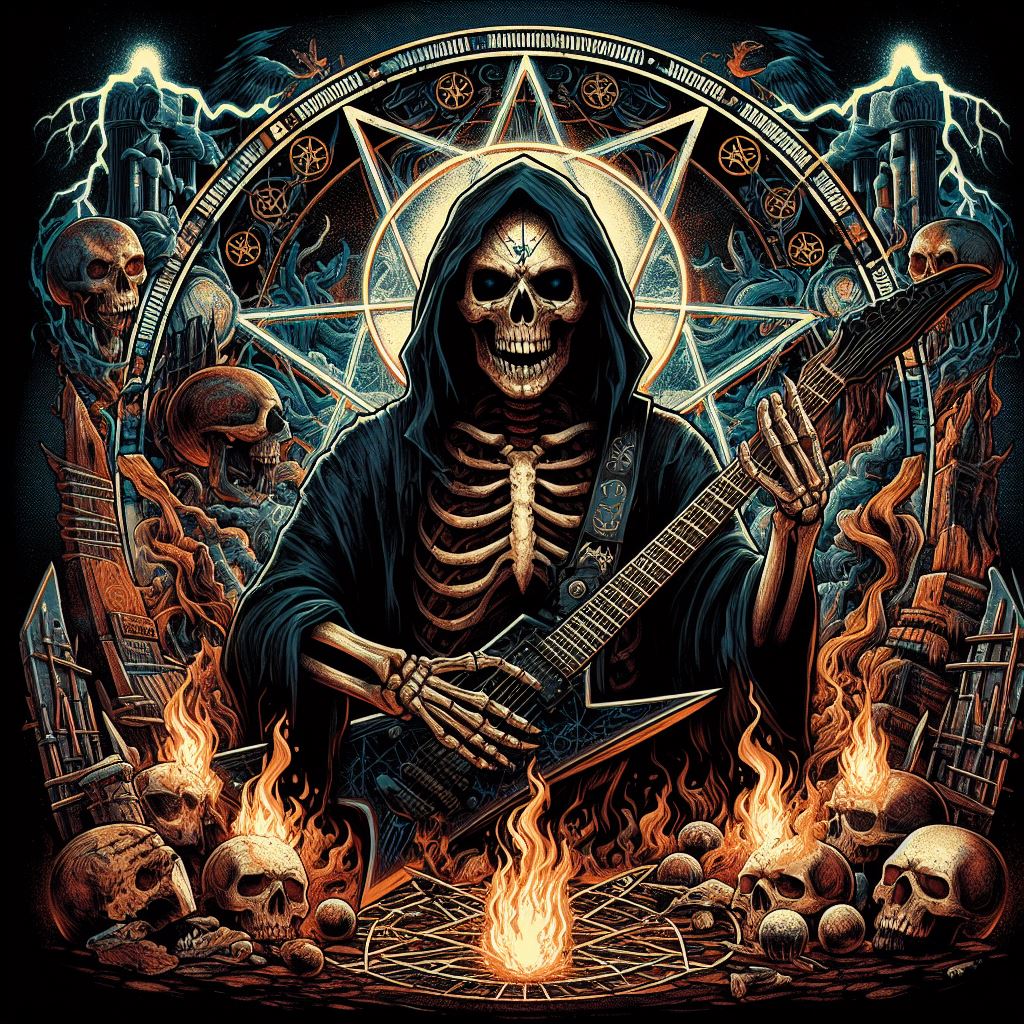Trivium, hailing from Orlando, Florida, has carved a distinct path through the metal scene since their formation in 1999. Their music, a potent blend of thrash, melodic death metal, and metalcore, has garnered them a dedicated fanbase and a Grammy nomination. This article explores the band’s history, from its humble beginnings to its current status as a metal powerhouse.
Early Days and Finding Their Footing (1999-2004)
The spark that ignited Trivium came at a middle school talent show. Matt Heafy, a shredding guitarist with a passion for Metallica, caught the eye of vocalist Brad Lewter. Soon, Heafy found himself jamming with Lewter and drummer Travis Smith, forming the band that would become Trivium. The name itself, derived from the Latin term for the three classical branches of learning (grammar, logic, and rhetoric), hinted at their openness to various musical influences.
However, the early days were marked by lineup changes. Lewter departed, leaving Heafy to take on vocal duties alongside his guitar work. Bassists and guitarists came and went as the band honed their sound, heavily influenced by thrash giants like Metallica and Slayer, melodic death metal acts like In Flames and At the Gates, and the burgeoning metalcore scene.
A turning point came in 2002 when Heafy won “Best Metal Guitarist” at the Orlando Metal Awards. This recognition, coupled with a strong demo, landed them a deal with German label Lifeforce Records. Their debut album, “Ember to Inferno” (2003), showcased a raw, aggressive sound, laying the foundation for their future success.
Rise to Prominence with Roadrunner Records (2004-2011)
The band’s potential caught the attention of Roadrunner Records, a major label synonymous with heavy music. Signing with Roadrunner in 2004 proved to be a pivotal moment. With their sophomore album, “Ascendancy” (2005), Trivium truly arrived. The album, produced by Heafy himself alongside Jason Suecof, displayed a more refined sound while retaining the band’s signature intensity. Tracks like “Like Light to the Flies” and “Pull Harder on the Strings of Your Martyr” became staples of their live shows and earned them a Grammy nomination for Best Metal Performance.
Trivium continued to tour relentlessly, sharing stages with established acts like Machine Head and Slayer. Their subsequent albums, “The Crusade” (2006) and “Shogun” (2008), further solidified their position within the metal elite. “Shogun,” in particular, showcased a newfound complexity and ambition, incorporating elements of Japanese traditional music and progressive metal.
Evolution and Experimentation (2011-Present)
The 2010s saw Trivium enter a period of experimentation. “In Waves” (2011) leaned more towards a modern metal sound, featuring cleaner vocals and a focus on catchy choruses. This stylistic shift divided some fans, but the album still spawned successful singles like “In Waves” and “Black”.
“Vengeance Falls” (2013) marked a return to a heavier sound, while “Silence in the Snow” (2015) explored a more atmospheric direction. Their latest studio album, “In the Court of the Dragon” (2021), finds them striking a balance between aggression and melody, showcasing the band’s continued evolution.
Legacy and Impact
Trivium’s influence on the metal scene is undeniable. They are considered pioneers of the New Wave of American Heavy Metal, inspiring countless bands with their innovative blend of styles. Heafy’s technical prowess and songwriting skills are widely admired, and the band’s relentless touring schedule has made them a favorite among metal fans worldwide.
Despite lineup changes (most notably the departure of drummer Travis Smith in 2014), Trivium remains a force to be reckoned with. With Matt Heafy, Corey Beaulieu (guitar), Paolo Gregoletto (bass), and Alex Bent (drums) at the helm, the band continues to push boundaries and deliver music that is both technically impressive and emotionally resonant. Trivium’s journey through the trivium of metal – thrash, melodic death metal, and metalcore – has resulted in a unique and lasting legacy.

Leave a Reply
You must be logged in to post a comment.